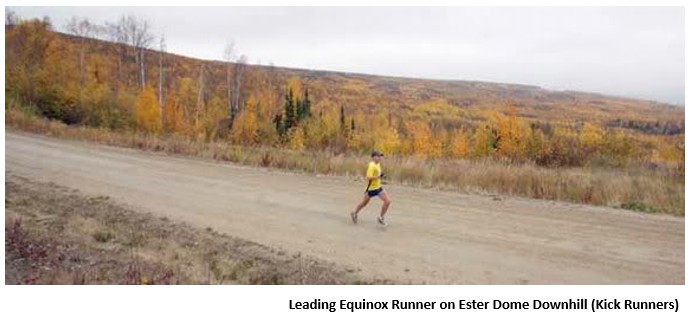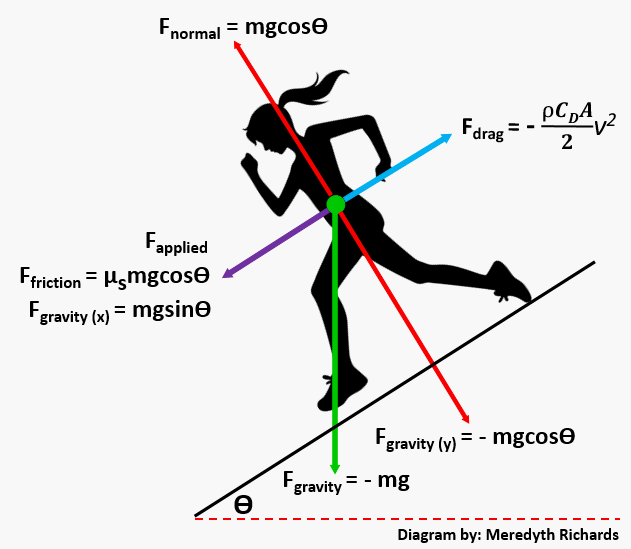Your heavy legs have finally crested that last
awful peak and now the worst is over. Or is it?

Sure, it's literally
"all downhill from here" but there are still more
than 9 miles to the finish line. Much of
what makes the Equinox Marathon so difficult is its
demanding transitions in muscles and cadence (not to
mention climate). Once a comfortable rhythm is
developed, an entirely new terrain appears.

For the downhill section of the course, runners must
shift from the short, toe-based stride typical of
climbing hills to much longer, stretched steps that
land on the heels. With each foot fall, the body is
also jarred by a high-intensity impact due to the
extra "help" forward from gravity. Now, only air
resistance and the ever-present downward pull of
gravity, along with a healthy respect for the disaster
potential of uncontrollable momentum, hold the runner
back.
|
As before, an
idealized force diagram can help explain how our
tireless runner can use physics to get the most
out of her downhill effort on race day.

Although the forces are slightly different, she
should maintain the same form running downhill as
she followed on the uphill. Because most runners use
downhill segments to "catch up" some of the time
lost on the uphill slog, it is still most efficient
for her to shift her center of gravity above her
front foot and to pump her bent arms. These same
techniques will produce the same applied force,
however, now the runner is not fighting Fgravity(x):
Consequently, Fapplied will have
a larger effective magnitude and result in more
speed and acceleration. At a certain point, either
to avoid injury or over-exertion, a reduction in
applied force will need to moderate the increase
in pace. Physics shows that the runner can
activate her "brakes" without changing the
launching force from her legs by shifting her
center of gravity back into the hill, reducing arm
pumping, and/or increasing the angle of elbow bend
to > 90 degrees.
|





